What is the Look and Sound of Student Ownership?

Student Ownership
Student ownership is defined as a mindset, according to Robert Crowe and Jane Kennedy, authors of Developing Student Ownership Supporting Students to Own Their Learning through the use of Strategic Learning Practices. Authors describe students with an ownership mindset who know they have the authority, capacity, and responsibility to own their learning.
The Look and Sound of Student Ownership
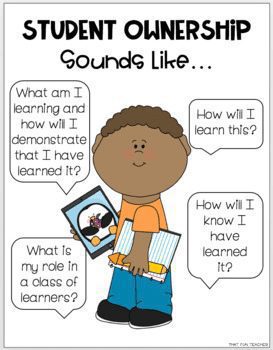
Crowe and Kennedy focus on increasing the opportunities for learning and increasing the opportunities for students ownership. Authors use practices in curriculum, instruction, assessment, and climate to do this. Crowe and Kennedy briefly shown how it works in curriculum. They define curriculum as what the student needs to know and do at the end of a lesson, unit, or course. Students must demonstrate an increase in ownership by clearly articulate answers to the following questions:
- What am I learning?
- Why am I learning this?
- How will I demonstrate I have learned it?
Teachers must begin by determining the answers to the following questions:
- What will my students learn?
- Why are my students learning this?
- How will my students demonstrate they have learned it?
Authors (2018) ask us to imagine walking into a third grade classroom and asking a student, “What are you learning today?” Now imaging hearing this:
“Today I am learning how to describe characters by their traits, motivations, and feelings. We are reading Charlotte’s Web, and I am describing Wilbur in chapter 3. I will know that I have done a good job taking notes on this by filling out my character map accurately. I am learning how to do this because, when we finish this book, I am writing an opinion essay on which character was most admirable: Charlotte, Wilbur, or Fern. I will take notes on all of the characters to use as details in my essay. I am checking with my friends in my group, because they will help me figure out if I have left any important information out of my notes. I will help them, because that’s how we help everybody in the class get smarter. —” (pg 1)
Can you imagine if that were the response of most students in your class? Do you believe a student could take this much ownership of their own learning? Crowe and Kennedy do.
Authors believe the most effective way for students to understand their role in learning is to take ownership, and it is a skill that can be taught directly and mastered. The diagram below shows student engagement vs student ownership.
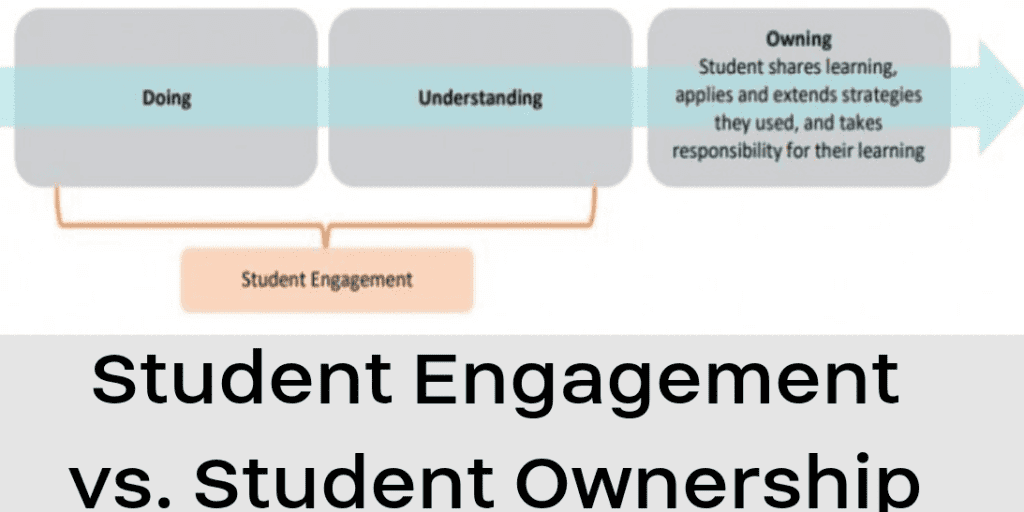
An example of student engagement vs student ownership:
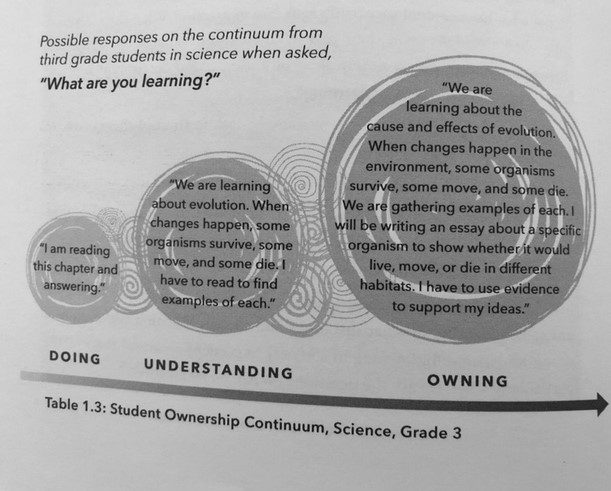
What is the difference between a student who is simply doing or understanding curriculum and one who owns what they are learning? According to the authors, a student is doing when they can state the task in front of them or recite what they are doing. A student understands when they can explain the skill they are learning. A student owns learning is when they can articulate what skill they are learning, why they are learning it, how they will demonstrate they have learned it, and how they will use it in the future.
True success in education requires students to go beyond just doing or understanding school – they must own their learning. Crowe and Kennedy (2018) describe “a student who owns their learning can state what they are learning and why, and can explain how they learn best, can articulate when they are learning and struggling, and understand their role in any academic setting”. (pg 4)
Empowering Students to Take Ownership of Their Learning is a video that gives what ownership looks and sounds like.
Further information is provided on Student Engagement vs. Student Ownership in the article “What is the difference between Student Engagement and Student Ownership?“
Teacher’s Role in Student Ownership
I mentioned previously that Crowe and Kennedy’s focus is to increase students’ opportunities to learn and take ownership of their learning. This is done by developing a set of strategic learning practices offered to students daily.
Authors explain that students are offered support, as they have the authority, capacity, and responsibility to own their learning. So, how can teachers support students to cultivate an ownership mindset? Crowe and Kennedy believe by delegating their authority, capacity and responsibility.
Authors paint a picture of successful students who have the authority to make decisions regarding their own learning. This means students learn something new, and have the authority to determine what they need to master a certain skill, i.e., frequency and types of practice, specific opportunities to authentically apply learning, and more opportunities to transfer learning into new situations. Crowe and Kennedy point out that teachers must ensure that students have the authority to make decisions about how they learn.
Students have the authority to make decisions regarding their learning, but also need to own their learning. Crowe and Kennedy explain that students have capacity when teachers provide them with the knowledge and skills to challenge themselves and self-reflect on their growth. Authors believe these are the skills that lead to meta cognition.
Teachers provide students with capacity by supplying students with the skills needed to succeed, sharing why they need them, and explaining how they will use them in their current and future learning. So, once students have the authority to make decisions about how they will learn, teachers must ensure they have the capacity to analyze and reflect on their own learning.
Lastly, it is the responsibility of students to understand their role in their own learning and take responsibility for their success and mistakes. Authors point out that students cannot be held responsible if they have no understanding of what they are learning, how they will be taught, and how they will demonstrate their learning. Crowe and Kennedy emphasize that educators cannot demand students take responsibility for their own learning if they have not given them the authority and capacity to do so.
How does a teacher build the authority, capacity, and responsibility needed for student ownership? Authors suggest a teacher must model the thinking behind ownership, explicitly teach the skills of ownership, and most importantly, be willing to delegate the authority, capacity, and responsibility to the students.
Strategic Learning Practices of Student Ownership
The purpose of strategic learning practices is to offer students the opportunity to increase their learning by offering support for students, giving authority, capacity, and responsibility to own their learning. Crowe and Kennedy focus on practices in curriculum, instruction, assessment, and climate that increase the opportunity for learning and student ownership.
Here is a preview:
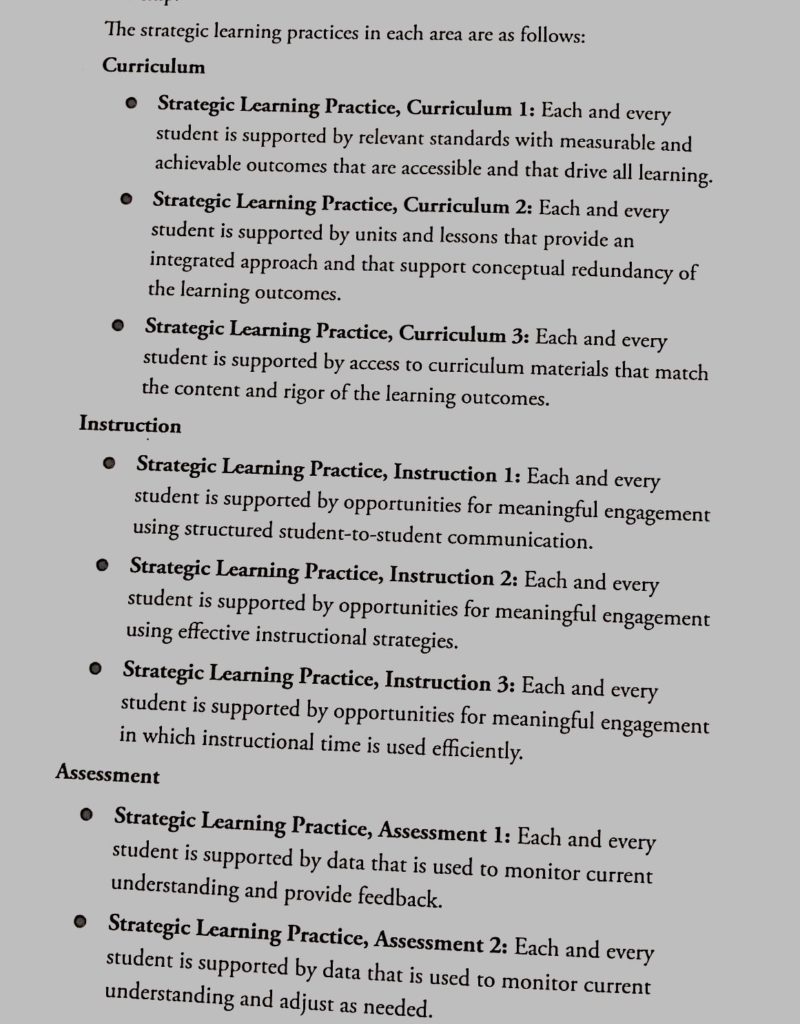
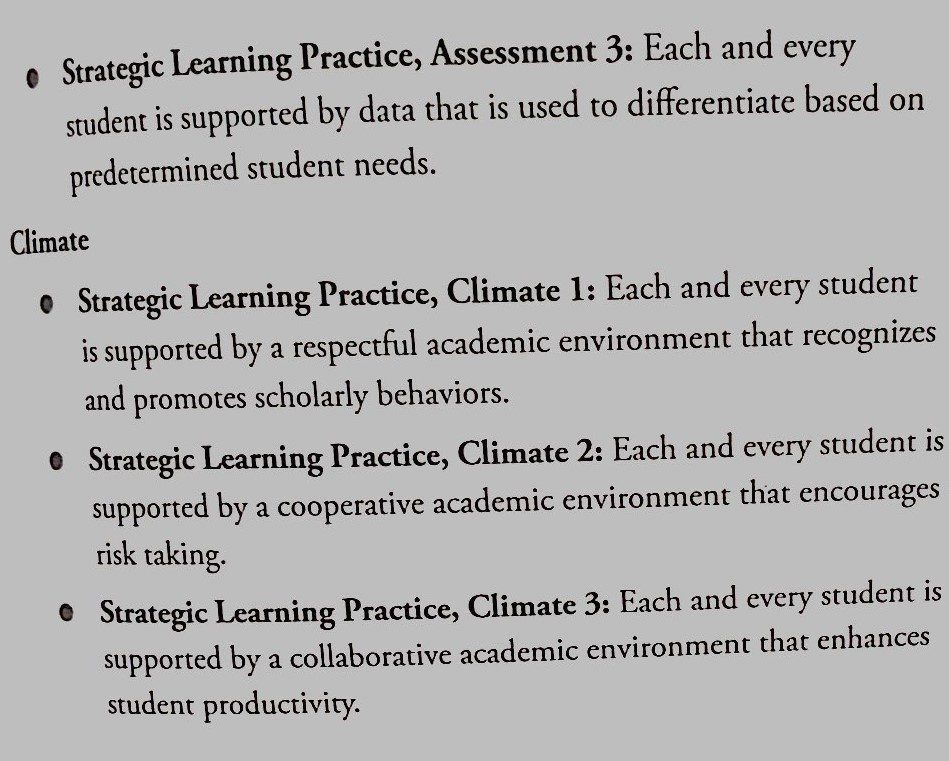
I will address the Strategic Learning Practices in each area in the subsequent Blog Posts.
Conclusion
Authors believe each decision regarding curriculum, instruction, assessment, and climate will impact other decisions, because these decisions cannot be made in isolation. Crowe and Kennedy point out that it is the teacher’s job to decide how these four areas work together to ensure that student learning is occurring. They emphasize these decisions support increase student ownership is paramount.
Take a look at my next blog How to Develop Students to Own What They are Learning.
